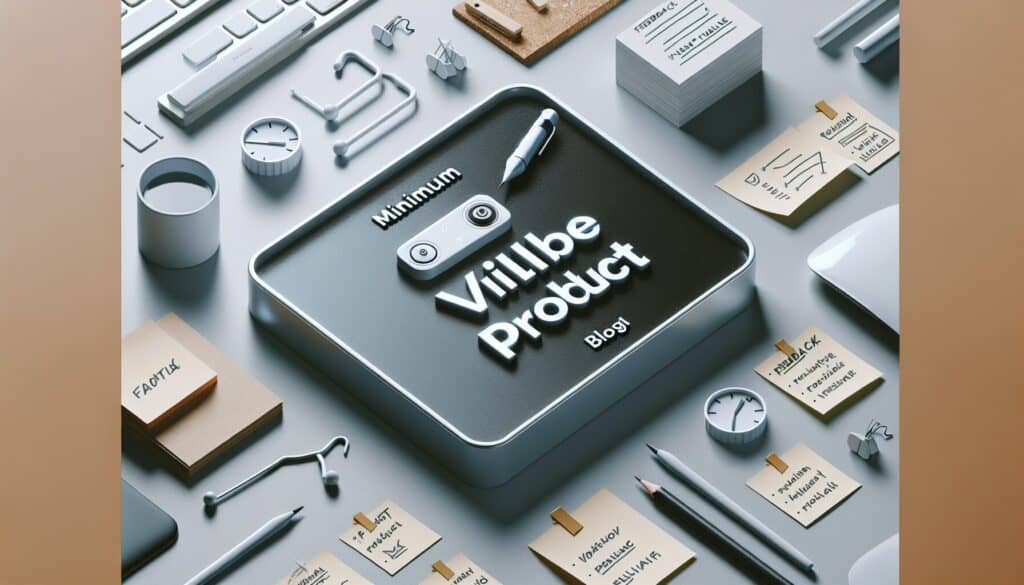To release a new product with just enough features to attract early adopter customers and validate a product idea early in the product development cycle.
- Methodologies: Engineering, Ergonomics
Minimum Viable Product (MVP)

Minimum Viable Product (MVP)
- Agile Methodology, Agile Product Development, Iterative Development, Minimum Marketable Product (MMP), Minimum Viable Product (MVP), Prototyping, User experience (UX), User-Centered Design, Validation
Objective:
How it’s used:
- Development teams build a basic version of the product with core functionalities to test hypotheses, gather user feedback, and learn what resonates with the target audience with minimal resource investment.
Pros
- Validates product ideas quickly, minimizes development costs and risks, facilitates learning and iteration based on real user data.
Cons
- Risk of releasing a product that is too basic and disappoints users, potential for negative initial impressions if not managed well, may not be enough to test true market demand.
Categories:
- Ideation, Lean Sigma, Problem Solving, Product Design
Best for:
- Rapidly testing a core product hypothesis and gathering user feedback with the least amount of effort and resources.
The Minimum Viable Product (MVP) methodology is often utilized in sectors such as technology, consumer goods, and healthcare, where rapid iteration based on user feedback is paramount to success. This approach is particularly beneficial during the product development phase, allowing teams to test assumptions about user needs and feature preferences with a basic version of their offering. For example, a tech startup may release a simplified mobile application stripped of advanced features, focusing instead on core functionalities that address a specific problem. This enables the company to gather crucial data on user interactions and satisfaction, informing subsequent development with minimal initial investment. Typically, the initial MVP development is initiated by product managers or entrepreneurs, but it ideally involves a cross-functional team including designers, developers, and marketing professionals who can contribute diverse perspectives on usability and marketability. Industries such as fintech and e-commerce frequently adopt this strategy, as rapid shifts in consumer preferences necessitate efficient validation of new concepts. Gathering user feedback from MVP testing can lead to iterative improvements, ensuring that final products are more aligned with market demand, thus reducing costly pivots later in the development process. The ability to engage users early with a tangible product, even in its most basic form, creates a foundation for ongoing dialogue and innovation.
Key steps of this methodology
- Identify the core problem to solve based on market needs.
- Define the key features required to address the identified problem.
- Create a prototype with essential functionalities for quick development.
- Launch the MVP to a selected audience for initial feedback.
- Monitor user interactions and gather qualitative feedback.
- Analyze data to validate or invalidate product hypotheses.
- Iterate on the product by refining features based on feedback.
- Repeat the process with subsequent versions to enhance the product.
Pro Tips
- Conduct in-depth user interviews prior to MVP development to identify pain points and expectations, ensuring that core features genuinely address user needs.
- Implement A/B testing rapidly within the MVP to evaluate different variations of features, allowing data-driven decisions for prioritizing enhancements.
- Incorporate a robust analytics framework from the outset to capture user interaction data, enabling informed iterations that align with user behavior and preferences.
To read and compare several methodologies, we recommend the
> Extensive Methodologies Repository <
together with the 400+ other methodologies.
Your comments on this methodology or additional info are welcome on the comment section below ↓ , so as any engineering-related ideas or links.
Historical Context
1949
1950
1950
1960
1960
1960
1960
1940
1950
1950
1958
1960
1960
1960
1960
(if date is unknown or not relevant, e.g. "fluid mechanics", a rounded estimation of its notable emergence is provided)















Related Posts
Musculoskeletal Discomfort Questionnaires
Multivariate Testing (MVT)
Multiple Regression Analysis
Motion Capture Systems
MoSCoW Method
Mood’s Median Test